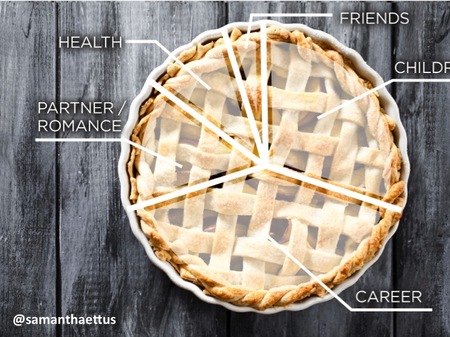The latest cover of The New York Times Magazine perpetuates an unrealistic standard of measurement that women have been using increasingly since the equally far-fetched 2012 Atlantic Monthly cover story by Anne-Marie Slaughter.
Back then, journalists and thinkers -- countless feminists among them -- allowed Anne-Marie Slaughter, back from the equivalent of a tour of duty in Iraq, to tell us that she returned from her tour of duty and realized women can't have it all.
So, after erroneously giving this cred to Anne-Marie Slaughter (a piece we should have dismissed, then given the ridiculous standard applied to her own outlier circumstances), it is no surprise that 18 months later, the New York Times has tainted a brilliant cover story about a rising female politician with the headline: "Can Wendy Davis Have it All?" It is time to drop this false objective from the media and from our own lives.
It is not only the impossible "have it all" ideal that is problematic; it is an entire hat trick of nonsensical ideals that we need to eliminate from our sights.
Let's start with the measurement tool referenced in the current offending title -- "having it all." I dare you to point to one person who has achieved the "have it all" standard. Does Barack Obama have it all? Oprah? Jennifer Aniston? No.
Moving on, let's talk about juggling. For years now, I have been talking about the insanity that a woman feels when she Googles "working mom" and clicks on the images. You will find a woman in a business suit holding a baby and a laptop at the same time. Who does that successfully? Let's agree to leave juggling to the circus professionals.
Next, we have the image of the scale -- offering balance. This is probably the most ubiquitous term we are told to strive for. But the problem is that for a scale to be in perfect balance, it needs two equal things on either side. But your work time and your "life" time are never going to be in perfect balance. It is yet another measurement tool that is guaranteed to lead to failure and frustration.
The reality is that as women, we love to measure ourselves, so let's drop these three unrealistic and unattainable standards and replace them with a tool we can all use and thrive with -- a pie.
We each have our own pie and it is whole and already fully baked. It is up to you to label your slices. Yours might include career, partner or romance, kids, health and friends. The size of each slice is based on the time they are taking right now.
You probably don't have much control over your time allocation. You might need to be spending 60 hours a week at work to meet your income requirements, or you might need 20 hours a week to take care of your sick parent. So let's stop beating ourselves up over time and assume we have been rational about how we've allocated it.
What you do have control over are the goals for each slice. For your kids, it might be to make them feel loved and to help them reach their potential. For your health, it might be adding exercise to your week. Your measurement is based on your achievement of these goals rather than the time allocation for each slice.
So as a community of women and the men who love us or depend on us, let's agree to drop having it all, juggling it all and balancing. This pie is our new framework -- one in which we can succeed and work towards our individual goals.
Now that's a guilt-free pie worth eating.
